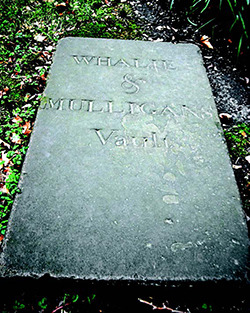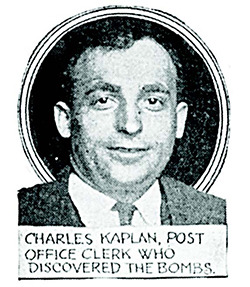Spies in New York
Through every era of American history, New York City has been a battleground for international espionage, where secrets are created, stolen, and passed through clandestine meetings and covert communications. Some spies do their work and escape, while others are compromised, imprisoned, and—a few—executed. Spy Sites of New York City by H. Keith Melton and Robert Wallace takes you inside this shadowy world and reveals the places where it all happened. Read on for a preview of four of over 200 New York City spy sites featured in the book.
7. Loose Lips at the Tailor Shop
Hercules Mulligan may have been married to the niece of a Royal Navy Admiral, but he was a staunch patriot. A member of the Sons of Liberty and an agent of the Culper spy ring, Mulligan hid his espionage activities behind a clothing shop at 23 Queen Street (now Pine Street) that sold “epaulets for gentlemen of the army and militia.” As Mulligan measured British officers for their uniforms, he was well-placed to overhear any gossip that might prove useful to the patriot cause. At the end of the war Washington rewarded Mulligan’s loyalty by buying a full set of clothing from the shop, enabling him to advertise as “Clothier to Genl Washington.” Mulligan is buried near his good friend Alexander Hamilton.

20. New York’s Finest and Pinkerton’s Best
Timothy Webster was a New York City cop stationed at the New York City Crystal Palace on 42nd street between Fifth and Sixth Avenues (today Bryant Park) for the 1853 Exhibition of the Industry of All Nations when he caught the attention of spymaster Allan Pinkerton. Impressed by his efficiency and manners, he recruited him to the Pinkerton National Detective Agency where Webster quickly became one of his most notable agents. Among Webster’s many accomplishments, he foiled a plot to assassinate President Lincoln on a journey from Illinois to Washington for the inauguration and infiltrated the Confederate intelligence organization during the Civil War. Outed as a Union spy by two fellow agents under torture in early 1862, Webster became the first person executed for espionage in the Civil War.
31. US Passports at Bargain Prices
At the beginning of World War I, German agents in the United States found themselves without a secure method for communicating with Berlin. Britain had severed the undersea communication cable between Germany and the United States and the United States had forbidden the use of its wireless transmitters to send ciphered dispatches to Germany. German military attaché Captain Fritz von Papen came up with the idea of creating counterfeit passports to secure the passage of trusted couriers between the US and Germany. He instructed a German American lawyer, Hans von Wedell, to establish an office at 8 Bridge Street (since replaced by a skyscraper) where he would secretly procure passports as cheaply as possible. Emissaries were sent to German residents in Hoboken, New Jersey to offer $20 in exchange for applying for a US passport. These passports would then be altered for use by German officers.
61. He Saw Something and Said Something
On April 27, 1919, postal clerk Charles Kaplan was reading the newspaper while riding the subway to his home at 765 East 183rd Street, the Bronx, when he came across an account of a bomb mailed to former US senator from Georgia Thomas Hardwick, cosponsor of the controversial Immigration Act of 1918. Kaplan took note of the description of the package, noting that he had seen similar packages at work. He switched trains at 110th street, heading back to the post office at 33rd Street and Eighth Avenue and alerted a supervisor. After a short search they found 16 packages wrapped similarly to the package mailed to Hardwick. All had been undelivered due to insufficient postage and all contained explosive devices. Information about the bombs was passed to other post offices across the countries, enabling the discovery of more packages. In total, 36 mail bombs were intercepted, addressed to prominent citizens like J. P. Morgan Jr., John D Rockefeller, New York mayor John F. Hylan, and Supreme Court Justice Oliver Wendell Holmes Jr. If Kaplan had not intervened, the packages would have been delivered on May 1—May Day. The perpetrators were never discovered.

Spy sites from every era of American history cover New York City. To learn more about these and many others, check out Spy Sites of New York City by H. Keith Melton and Robert Wallace.
